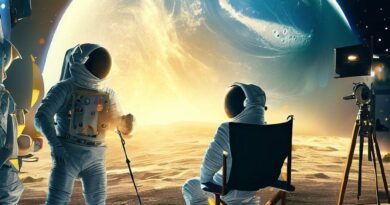Evidence that proves the moon landings weren’t faked
It’s among the most persistent conspiracy theories out there – and there’s a lot of them to choose from.
And yes, this is about the moon landings.
The whole conspiracy surrounding our expeditions to the Moon is just that they never actually happened.
Everything from shadows being fake to no wind being in space has been offered as supposed evidence.
However, there is also evidence to suggest the opposite.
Loading…
So let’s look at some that show the moon landings did, in fact, happen.
The first conspiracy on our list is the theory that the shadows in the landing photos showed that images had been faked.
Because the shadows are not parallel, this was taken as proof that the images were not real.
However, this affect can be reproduced anywhere – even on Earth itself.
National Space Centre Discovery Director, Professor Anu Ojha, said in a 2019 lecture at Royal Museums Greenwich that you will have seen this effect at some point in your life.
“You have all seen this phenomenon yourself, where, because of perspective, parallel lines appear to be non-parallel.” he said.
“If you are trying to reduce on to a two-dimensional plane a three-dimensional situation, you can make lines do all sorts of weird things. Artists have been using this for centuries.”
And, harking back to the ‘no wind in space’ theory, there’s also an explanation for that.

It’s one of the most defining moments of human history, seeing the American flag flying high on the Moon.
However, many skeptics have been quick to claim that the flag appears to affected by wind – which doesn’t happen in space.
But it would appear that the devil is in the detail as a telescopic pole has actually been set up to unfurl the flag.
Professor Ojha explained: “Because it’s been set up like this, it appears to be waving in the wind,” adding that it also has a lot of wrinkles because it ‘literally been screwed up for four days en route to the Moon’.
And the Institute of Physics also says that weak gravity on the Moon caused the fluttering effect.
Another popular theory is that the astronauts would have be fried by radiation due to the ‘Van Allen’ belt around Earth.

These are highly energetically charged particles from solar wind, and some believed that humans couldn’t pass through without being exposed to high levels of radiation.
And this was a genuine concern from NASA at the time.
So, they crafted the spacecraft in an aluminium shell, insulating it. And readings from nine missions showed that the average radiation exposure was 0.46 – which is 10 times stronger than radiation from exposure to X-rays.
However, Professor Ojha added that if you are going to travel through a Van Allen belt then you are going to do it fast.
“Travelling through the Van Allen radiation belt if you are going fast enough – which you need to be if you’re going to the Moon – is no problem whatsoever.” he said.
The expedition has also left physical evidence behind on the Moon.

Since the 1969 Apollo 11 landing 50 years go, there have been 8,400 images and videos taken of the landing sights – which show astronaut’s footprints and tracks from lunar vehicles.
We also have Moon rocks taken from the landings, which have been verified by lunar laboratories around the world.
Part of the problem is that there is so much information floating around online that it can become increasingly challenging to distinguish trustworthy information.
Professor Ojha said that ‘this information ocean’ is getting ‘more turbulent’ as time goes on.
“The only tools we have to navigate through this maelstrom are the critical thinking skills that we are trying to develop in people as scientists.” he said.


